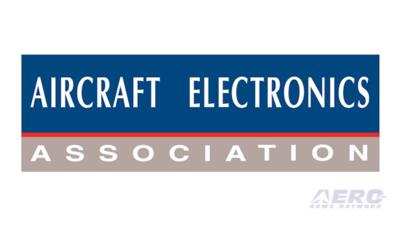Thu, Aug 10, 2017
ADS-B Out Installations Must Support Pilot-Entered Data
The FAA recently published a Legal Interpretation regarding Flight ID that essentially requires the aircraft Flight ID (either aircraft call sign or aircraft registration number) to be accurate to the aircraft's flight plan. Therefore, if the aircraft operates or is likely to operate with a dynamic call sign, the ADS-B Out installation must be able to support pilot-entered Flight ID in order to be rule compliant.

This is not to say that approved equipment is deficient. The Minimum Operational Performance Standards (MOPS) for the equipment allows for either information to be programmed into their equipment. It is a sales issue, in that "one-size ADS-B Out doesn't fit all flight missions."
According to the Aug. 3, 2017, Legal Interpretation, citing 14 C.F.R. 91.227(d)(8), the FAA states: "It is clear from the NPRM and final rule preambles that § 91.227(d)(8) is meant to ensure that ATC is able to correlate flight plan information with information presented on the radar display. Therefore, to satisfy § 91.227(d)(8), a pilot would have to provide the same call sign on his or her flight plan as he or she transmits out using ADS-B."
14 C.F.R. 91.227(d)(8) states, in part:
§ 91.227 Automatic Dependent Surveillance-Broadcast (ADS-B) Out equipment performance requirements.
(d) Minimum Broadcast Message Element Set for ADS-B Out. Each aircraft must broadcast the following information, as defined in TSO-C166b or TSO-C154c. The pilot must enter information for message elements listed in paragraphs (d)(7) through (d)(10) of this section during the appropriate phase of flight.
(8) An indication of the aircraft's call sign that is submitted on the flight plan, or the aircraft's registration number, except when the pilot has not filed a flight plan, has not requested ATC services, and is using a TSO-C154c self-assigned temporary 24-bit address.
The Aircraft Electronics Association (AEA) notes that this places an additional knowledge burden on the installing agency to ensure that the customers are purchasing mission-appropriate equipment. Should the customer routinely fly with a dynamic call sign such as EMS, flight schools or volunteer organizations, they will need the ability for the pilot to change their ADS-B Out Flight ID to align with their flight plan call sign.
The AEA said in a statement that it is disappointed that this topic is just now coming to light, seven and a half years from the date the rule was published. In addition, the agency will need to find a remedy for any ADS-B Out system that may not support a dynamic Flight ID that was installed prior to this interpretation (Aug. 3, 2017).
(Source: AEA)
More News
Aero Linx: JAARS Nearly 1.5 billion people, using more than 5,500 languages, do not have a full Bible in their first language. Many of these people live in the most remote parts of>[...]
'Airplane Bounced Twice On The Grass Runway, Resulting In The Nose Wheel Separating From The Airplane...' Analysis: The pilot reported, “upon touchdown, the plane jumped back>[...]
"Burt is best known to the public for his historic designs of SpaceShipOne, Voyager, and GlobalFlyer, but for EAA members and aviation aficionados, his unique concepts began more t>[...]
"Polaris Dawn, the first of the program’s three human spaceflight missions, is targeted to launch to orbit no earlier than summer 2024. During the five-day mission, the crew >[...]
There Are SO Many Ways To Get YOUR Aero-News! It’s been a while since we have reminded everyone about all the ways we offer your daily dose of aviation news on-the-go...so he>[...]
 ANN's Daily Aero-Linx (05.04.24)
ANN's Daily Aero-Linx (05.04.24) NTSB Final Report: Quest Aircraft Co Inc Kodiak 100
NTSB Final Report: Quest Aircraft Co Inc Kodiak 100 Aero-News: Quote of the Day (05.04.24)
Aero-News: Quote of the Day (05.04.24) Aero-News: Quote of the Day (05.05.24)
Aero-News: Quote of the Day (05.05.24) Read/Watch/Listen... ANN Does It All
Read/Watch/Listen... ANN Does It All



